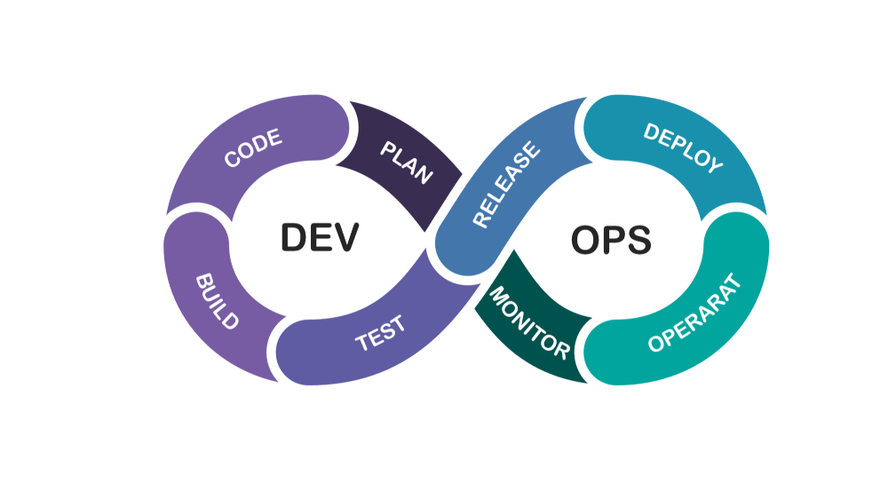Содержание
In update-driven approach, the information from multiple heterogeneous sources are integrated in advance and are stored in a warehouse. A core component of business intelligence, a data warehouse pulls together data from many different sources into a single data repository for sophisticated analytics and decision support. Operational systems are optimized for the preservation of data integrity and speed of recording of business transactions through use of database normalization and an entity-relationship model. Operational system designers generally follow Codd’s 12 rules of database normalization to ensure data integrity.
By merging these data types and breaking down silos between the two, businesses can get a complete, comprehensive picture for the most valuable insights. Although a data warehouse and a traditional database share some similarities, they need not be the same idea. The main difference is that in a database, data is collected for multiple transactional purposes. However, in a data warehouse, data is collected on an extensive scale to perform analytics. Databases provide real-time data, while warehouses store data to be accessed for big analytical queries. A data warehouse can be defined as a collection of organizational data and information extracted from operational sources and external data sources.
A database is not the same as a data warehouse, although both are stores of information. A data warehouse is an information archive that is continuously built from multiple sources. A data warehouse is intended to give a company a competitive advantage. It creates a resource of pertinent information that can be tracked over time and analyzed in order to help a business make more informed decisions. That wider term encompasses the information infrastructure that modern businesses use to track their past successes and failures and inform their decisions for the future. IBM InfoSphere® DataStageis a data warehouse tool that delivers advanced enterprise ETL and provides a multicloud platform that integrates data across multiple enterprise systems.
Health Workforce
Both databases and data warehouses are relational data systems, which means that they store, organize and transport data points that are related to each other in some way. Leverage SQL, structured query language, to acces data stored in databases and warehouses. Vertica offers the most advanced unified analytical warehouse that enables organizations to keep up with the size and complexity of enormous data volumes. Vertica helps businesses perform tasks like predictive maintenance and customer retention, financial compliance and network optimization, and much more. Data hubs provide the data governance needed to streamline data sharing between a diverse collection of endpoints.

A https://globalcloudteam.com/ is an information storage system for historical data that can be analyzed in numerous ways. Companies and other organizations draw on the data warehouse to gain insight into past performance and plan improvements to their operations. A data warehouse is the secure electronic storage of information by a business or other organization. The goal of a data warehouse is to create a trove of historical data that can be retrieved and analyzed to provide useful insight into the organization’s operations. To choose an enterprise data warehouse, businesses should consider the impact of AI, key warehouse differentiators, and the variety of deployment models.
Why Consolidate Your Data Warehouses Into A Data Hub?
James M. Kerr authors The IRM Imperative, which suggests data resources could be reported as an asset on a balance sheet, furthering commercial interest in the establishment of Data Warehouses. Oracle Autonomous Data Warehouse is an easy-to-use, fully autonomous data warehouse that scales elastically, delivers fast query performance, and requires no database administration. The setup for Oracle Autonomous Data Warehouse is very simple and fast. Most end users are interested in performing analysis and looking at data in aggregate, instead of as individual transactions. However, often end users don’t really know what they want until a specific need arises. Thus, the planning process should include enough exploration to anticipate needs.

CRM and ERP, sensor and machine-generated data, social media data, Web logs, mobile networks, and a host of industry-specific data sources. With the industry’s first analytical database solution that separates compute from storage for on-prem environments, Vertica and Pure offer new levels of simplicity and flexibility. Disaggregated storage from Pure scales elastically as a single high-performance source of data. Run multiple isolated workloads and leverage on-demand compute for faster insights.
Data Collection
Dashboards automatically update in real time on a daily, weekly or monthly basis. A database is an information repository, typically in a table format. Users can periodically index a database to make sure the information is structured and accessible. You consent to the collection of anonymous analytics.What are we collecting? We collect anonymized data including the date and timestamp, number of nodes, data size, storage size, version #, OS and other data. We’re collecting this information to learn how we can make the product better for you in the future.
I consent to the collection of anonymous analytics as I use the Community Edition software. The Vertica Analytics Platform delivers the speed and massive scalability we need to maintain the high levels of service availability and system performance clients deserve. With Vertica, our organization is ready for the challenges retailers are facing – from Big Data to next-generation analytics. Explore our Thought Leadership library, including the most recent articles, webcasts and reports, with expert insights. Customer centricity is a mission critical initiative across industries.
They capitalize on current business systems, particularly when you combine data from multiple internal systems with new, important information from outside organizations. Data Warehouse is a relational database management system construct to meet the requirement of transaction processing systems. It can be loosely described as any centralized data repository which can be queried for business benefits. It is a database that stores information oriented to satisfy decision-making requests. It is a group of decision support technologies, targets to enabling the knowledge worker to make superior and higher decisions.
- The State Bank of India used several IBM solutions, along with IBM Garage™ methodology, to develop a comprehensive online banking platform.
- The concept of data warehousing was introduced in 1988 by IBM researchers Barry Devlin and Paul Murphy.
- SQL, or Structured Query Language, is a computer language that is used to interact with a database in terms that it can understand and respond to.
- They are designed to support operations like data sorting, filtering, merging, etc.
- Data warehousing is designed to enable the analysis of historical data.
Data is also automatically duplicated and backed-up, so you can minimize the risk of lost data. The MOLAP or multidimensional OLAP directly acts on multidimensional data and operations. This approach is also very expensive for queries that require aggregations. The results from heterogeneous sites are integrated into a global answer set. When a query is issued to a client side, a metadata dictionary translates the query into an appropriate form for individual heterogeneous sites involved.
Build Your Career In Data Warehousing
Though they perform similar roles, data warehouses are different from data marts and operation data stores . A data mart performs the same functions as a data warehouse but within a much more limited scope—usually a single department or line of business. However, they tend to introduce inconsistency because it can be difficult to uniformly manage and control data across numerous data marts.

Data warehousing is designed to enable the analysis of historical data. Comparing data consolidated from multiple heterogeneous sources can provide insight into the performance of a company. A data warehouse is designed to allow its users to run queries and analyses on historical data derived from transactional sources. AI can present a number of challenges that enterprise data warehouses and data marts can help overcome. Discover how to assess the total value such a solution can provide.
Today, the most successful companies are those that can respond quickly and flexibly to market changes and opportunities. A key to this response is the effective and efficient use of data and information by analysts and managers. A “data warehouse” is a repository of historical data that is organized by the subject to support decision-makers in the organization. Once data is stored in a data mart or warehouse, it can be accessed.
Analyze points and patterns that may align with current conditions so that businesses can make smarter decisions based on facts. Databases are application-oriented, typically limited to a single application , and stores detailed real-time data. Data warehouses are subject-oriented collections of historical data that can perform complex queries to retrieve summarized data. The concept of a data warehouse goes back to 1988 when Barry Devlin and Paul Murphy of IBM coined the perfect term. Many organizations have proprietary data warehouses that store information on performance metrics, sales quotas, lead generation stats and a variety of other information. Some other areas of software that often fall under the BI umbrella are business analytics , data mining, big data analytics, embedded analytics, enterprise reporting and data warehousing.
Automated Etl Tools
A decision support system is a computerized program that analyzes data in an organization or business, enabling managers to decide courses of action. A good data warehousing system makes it easier for different departments within a company to access each other’s data. For example, a marketing team can assess the sales team’s data in order to make decisions about how to adjust their sales campaigns. A data warehouse is designed as an archive of historical information.
The data typically originates in multiple systems, then it is moved into the data warehouse for long-term storage and analysis. This storage is structured so users from many divisions or departments within an organization can access and analyze the data according to their needs. Duplicated data — Many enterprises have data warehouses and subject-area or data marts in addition to a data lake, which results in duplicated data, lots of redundant ETL, and no single source of truth. Data flows into a data warehouse from operational systems , databases, and external sources such as partner systems, Internet of Things devices, weather apps, and social media – usually on a regular cadence.
The concept of the data warehouse was introduced by two IBM researchers in 1988. The State Bank of India used several IBM solutions, along with IBM Garage™ methodology, to develop a comprehensive online banking platform. The data in the data warehouse is read-only, which means it cannot be updated, created, or deleted . Improve data quality, by providing consistent codes and descriptions, flagging or even fixing bad data. Supporting each of these five steps has required an increasing variety of datasets.
Also, the retrieval of data from the data warehouse tends to operate very quickly. Dimensional structures are easy to understand for business users, because the structure is divided into measurements/facts and context/dimensions. Facts are related to the organization’s business processes and operational system whereas the dimensions surrounding them contain context about the measurement . Another advantage offered by dimensional model is that it does not involve a relational database every time. Thus, this type of modeling technique is very useful for end-user queries in data warehouse.
Business analysts, management teams, and information technology professionals access and organize the data. That involves looking for patterns of information that will help them improve their business processes. Both normalized and dimensional models can be represented in entity-relationship diagrams as both contain joined relational tables. The difference between the two models is the degree of normalization . These approaches are not mutually exclusive, and there are other approaches.
Customers
A data mart is a subset of a data warehouse that contains data specific to a particular business line or department. Because they contain a smaller subset of data, data marts enable a department or business line to discover more-focused insights more quickly than possible when working with the broader data warehouse data set. In the data warehouse process, data can be aggregated in data marts at different levels of abstraction. The user may start looking at the total sale units of a product in an entire region. Finally, they may examine the individual stores in a certain state. Therefore, typically, the analysis starts at a higher level and drills down to lower levels of details.
